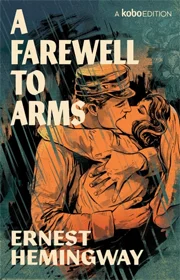
“A Farewell to Arms” is a poignant novel set against the backdrop of World War I. The story follows the experiences of Frederic Henry, an American ambulance driver in the Italian army, and his love affair with Catherine Barkley, a British nurse. As they navigate the harsh realities of war, their relationship deepens amid the chaos and uncertainty. The novel explores themes of love, loss, and the profound impact of conflict on the human condition. Against a vivid wartime canvas, Hemingway crafts a narrative that captures the fragility of life and the enduring power of love in the face of tragedy.
Read A Farewell to Arms Flipbook:
Listen to A Farewell to Arms Audiobook:
Title: A Farewell to Arms
Author: Ernest Hemingway
Genre: War fiction, Romance
Publication Year: 1929
Setting: World War I, primarily in Italy
Plot Summary:
• Follows the story of an American ambulance driver in the Italian army named Frederic Henry.
• He falls in love with a British nurse named Catherine Barkley.
• The novel explores the impact of war on individuals and relationships.
Themes:
• The brutality of war
• Love and loss
• The disillusionment of the “lost generation” post-World War I
Style:
• Hemingway’s minimalist prose style.
• Sparse dialogue and descriptive language.
Reception:
• Critically acclaimed for its realistic portrayal of war.
• Controversial at the time for its frank depiction of sex and strong language.
Legacy:
• Considered one of Hemingway’s major works.
• Adapted into a film in 1932 and 1957.
Impact:
• Explores the human condition in the face of adversity.
• Influential in shaping modern literature.